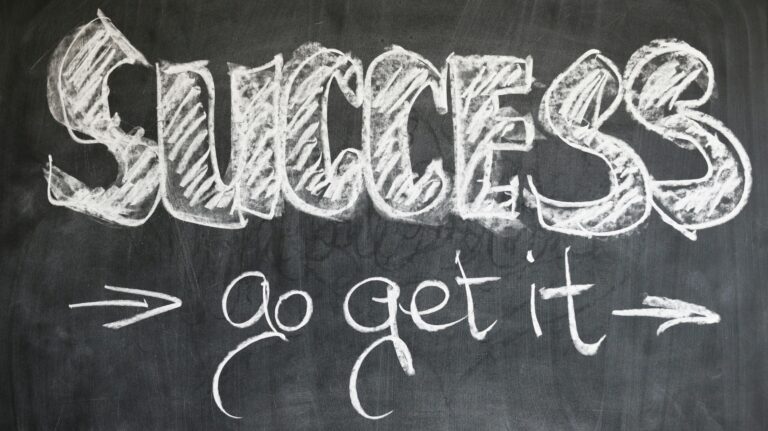Ever talked yourself into buying something that felt essential in the moment—but ended up sitting unused a week later? Yeah, we’ve all been there. Maybe it was the “perfect” kitchen gadget, another pair of shoes, or that subscription you swore would change your life. At the time, it felt justified—urgent, even. But deep down, you weren’t sure if it was a true necessity or just a well-dressed impulse.
Here’s the thing: in today’s world, wants are sneaky. They’re dressed up in the language of need, wrapped in urgency, and marketed as self-care. And when money’s tight or goals are on the line, that confusion can cost you. It’s not that you don’t care—it’s that you don’t always know how to pause, zoom out, and see the truth.
Let’s change that. In this article, we’re going to break down exactly how to tell the difference between a need and a want—so you can shop with confidence, spend with purpose, and stop second-guessing yourself. Let’s get started.
Why It’s So Hard to Tell the Difference
Your brain isn’t wired for frugal logic—it’s wired for survival and satisfaction. That’s why shopping triggers a quick dopamine hit. Add in a clever ad or a friend’s new purchase, and suddenly something that wasn’t even on your radar becomes a “must-have.”
Marketers know this. That’s why they blur the lines with phrases like “essentials,” “limited time,” or “don’t miss out.” Their goal? To get you to act fast before reason catches up.
And when you’re stressed, tired, or emotionally drained, your decision-making ability takes a hit. That’s when impulse spending thrives. Recognizing this emotional landscape is the first step toward clarity.
Wants That Pretend to Be Needs
Wants are masters of disguise. They often pose as needs by hitting emotional pressure points or exploiting small truths. For example:
- “It’s on sale—I’d be losing money not to buy it!”
- “I’ve had a rough week. I deserve something nice.”
- “Everyone’s got one by now. I’m behind.”
Sound familiar? These internal scripts are rationalizations, not realities. They make you feel like opting out is missing out.
Think about how often tech upgrades fall into this trap. A phone that works just fine suddenly feels outdated because the new model “does more.” But what’s really changed? Often, just the messaging.
Same goes for fashion, home decor, even kitchen tools. If it solves a problem you didn’t know you had, it’s probably a want in disguise.
The Power of the Pause: Time and Distance Reveal the Truth
Time is the ultimate truth-teller. If you’ve ever walked away from a shopping cart and come back later wondering why you almost bought it—that’s the pause doing its job.
Try the 24-hour rule for smaller purchases: wait a full day before buying anything you didn’t plan for. You’ll either forget about it or feel more certain that it aligns with your goals.
For bigger purchases, use the 30-day rule: write it down, revisit it later. If you still want it—and can pay for it without guilt—it’s more likely a need or a thoughtful want.
The pause helps your emotional dust settle. It lets the hype fade so you can make a decision with clarity, not craving.
Five Simple Questions to Ask Yourself Before You Buy
When you’re in the heat of the moment, these five questions can stop you from making a regretful purchase:
- Can I live without this for a week?
If the answer is yes, you’re likely facing a want—not a need. Urgency fades with time. - Is this replacing something I already have?
If not, you might just be adding clutter. If yes, ask whether the upgrade is necessary or just nice to have. - If I didn’t see it today, would I still want it?
This tests whether it’s truly important to you or just a reaction to what’s in front of you. - Does this align with my goals or values?
If your goal is to save or get out of debt, this question pulls you back into alignment. - Am I buying out of emotion or need?
Pause and get honest. Are you sad, bored, lonely, celebrating? Emotional spending feels urgent—but it rarely satisfies for long.
When “Needs” Aren’t Really Needs
Let’s talk about lifestyle creep—the sneaky way wants masquerade as upgraded needs.
- A basic coffee maker becomes a high-end espresso machine
- A reliable phone plan becomes a premium package with perks you rarely use
- A functional couch turns into a sectional upgrade you weren’t planning for
These aren’t inherently bad purchases. But when they happen automatically, without thought or trade-offs, they start to eat away at your financial progress.
Comfort isn’t the same as necessity. Be honest about whether an expense improves your quality of life or just feels good in the moment.
Tricky Gray Areas: When the Line Isn’t Clear
Sometimes a purchase is both a want and a need. Think of a winter coat that’s stylish and warm. Or a gym membership that supports both health and mental clarity.
Context matters. If you live in Canada, a winter coat is a need. But a luxury brand version? That’s where discernment comes in.
Income plays a role too. What’s a splurge for one person may be a basic expense for another. The key is intentionality: are you buying with awareness, or reacting automatically?
The goal isn’t perfection—it’s consciousness.
Handling FOMO and Urgency Tactics
Sales and marketing are designed to trigger FOMO (Fear of Missing Out). “One day only!” “Only 3 left in stock!” These tactics rush your brain so you don’t ask questions.
To combat this:
- Bookmark, don’t buy. Save the item and check back in 24 hours. You’ll either still want it—or not.
- Create a spending wishlist. Rank purchases by importance. When extra cash comes in, you’ll have a clear, guilt-free list ready.
- Install anti-FOMO tools. Use browser extensions like Honey or PriceBlink to see price history. Knowing the item is always on sale makes the “urgency” less convincing.
Build a Values-Based Spending Filter
Needs and wants become much easier to separate when you’ve defined your values. What matters most to you?
Start by identifying 3–5 core spending values. Examples might include: security, creativity, simplicity, family, or wellness.
Then build a “personal spending code.” For example:
- I spend on experiences with loved ones, but rarely on brand-name clothing
- I value health, so I invest in good food and movement
- I don’t buy on impulse—I wait and weigh
This filter becomes your guide. It helps you say no with confidence and yes without guilt.
Rewire Your Mindset for Lasting Change
There’s power in saying no. Every time you resist an unnecessary purchase, you build mental muscle. You shift from reacting to choosing.
And the more you practice, the clearer everything becomes. You stop second-guessing yourself. You start trusting your inner compass.
Needs become easier to identify. Wants become more intentional. And money—your money—starts working for you instead of disappearing on autopilot.
You’re not just spending less. You’re spending smarter.
Before You Go…
It’s easy to feel overwhelmed when you’re standing in the checkout line (or staring down a Buy Now button) wondering if you’re making the right call. Confusion is part of the process—especially when everything around you is engineered to blur the lines between needs and wants.
But look at how far you’ve come in just a few minutes. You’ve learned how to pause, how to spot emotional spending, how to ask smarter questions, and how to align your spending with what actually matters to you. That’s clarity. That’s confidence. That’s freedom.
The next time you’re tempted to buy something that wasn’t in the plan, remember: you’re not depriving yourself. You’re building the kind of life where every dollar has a purpose—and that purpose is peace.
You’ve got this. And your future self is already thanking you for it.
We’d Love to Hear From You
- What’s your go-to free or low-cost way to have fun?
- How do you handle the pressure to “spend to fit in” socially?
Share your story in the comments — your insight might be exactly what someone else needs to keep going.
great article!






Leave a Reply